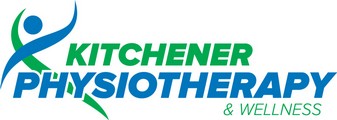Q: Dad is 72-years old and is having more and more trouble walking. We know he has stenosis in his low back. He's also complaining about a shock sensation in his arms. Can these symptoms all come from his stenosis or is something else going on?
A: Spinal stenosis is a narrowing of the opening called the spinal canal where the spinal cord travels from the brain down to the lumbar spine. Although stenosis is most common in the low back region, it can occur anywhere along the spine from the neck down to the lumbar spine.
It's possible your father has some stenosis in the cervical spine (neck). This could put pressure on the spinal cord in that area causing difficulty walking, electric shock sensations down the arms (called Lhermitte's sign), and clumsiness of the hands and fingers. Other symptoms such as head and neck pain, and changes in bowel and bladder function can also develop.
Any time the spinal cord is affected by disease, damage, or compression causing symptoms of this type, the condition is referred to as myelopathy. When the area affected is the cervical spine, then it's referred to as cervical myelopathy.
Cervical myelopathy can develop as a result of a disc protrusion pressing on the spinal cord. Changes in the alignment of the vertebral bodies such as occur with spondylolisthesis can also contribute to this problem. In spondylolisthesis, there is a fracture and separation of one of the supporting columns of the vertebra. The affected vertebral body shifts forward over the bone below it. As this shift occurs, the spinal canal narrows between the two vertebrae and traction (pull) is placed on the spinal cord and spinal nerve roots.
Age-related factors are another category of factors leading to the development of myelopathy. For example, thickening and/or ossification (hardening) of the spinal ligaments within the spinal canal takes up space normally needed for the passage of the spinal cord. Degenerative changes of the vertebral bodies with bone spur formation and narrowing of the joint spaces compress the vertebral bodies. The result is a narrowing of the spinal canal (stenosis). Spinal stenosis is a big reason why older adults develop cervical myelopathy.
Your father will need to see his physician for an examination to determine what might be causing these new symptoms. Don't let him put this off as nothing to worry about. Early diagnosis and treatment is best to avoid more serious problems later.
Reference: Hisanori Mihara, MD, et al. A New Performance Test for Cervical Myelopathy. In Spine. January 2010. Vol. 35. No. 1. Pp. 32-35.
WE OFFER DIRECT BILLING TO
MOST INSURANCE COMPANIES
MOST INSURANCE COMPANIES
Physiotherapy - Massage Therapy - Shockwave








